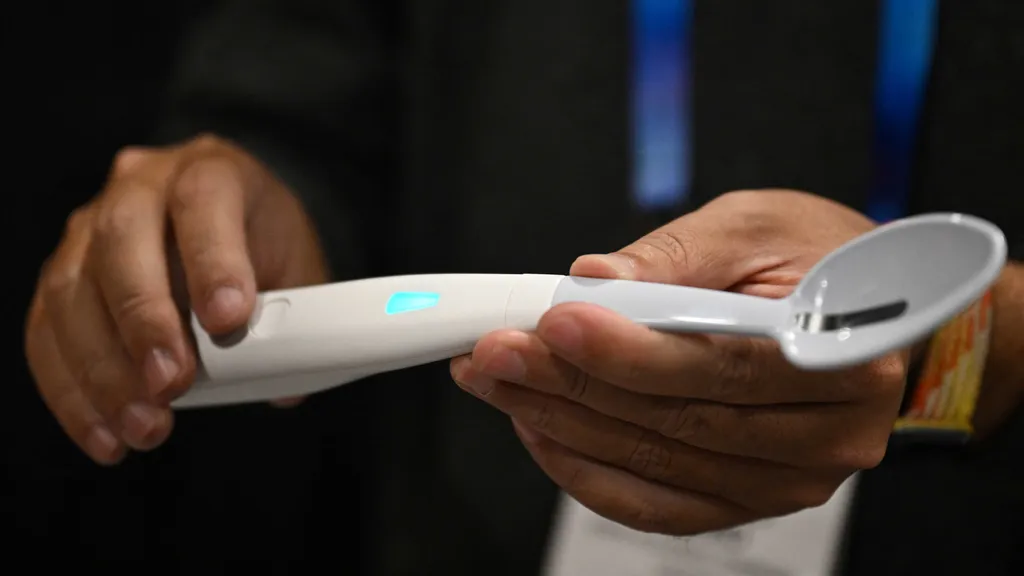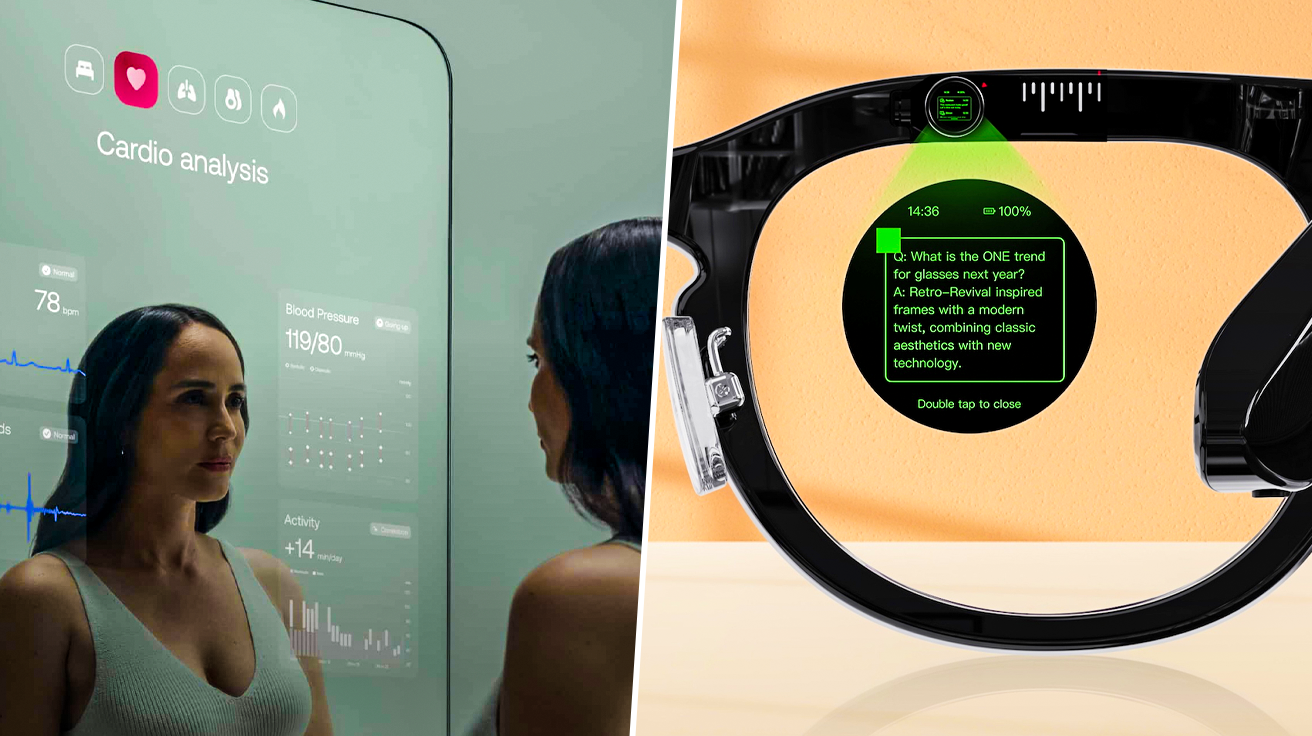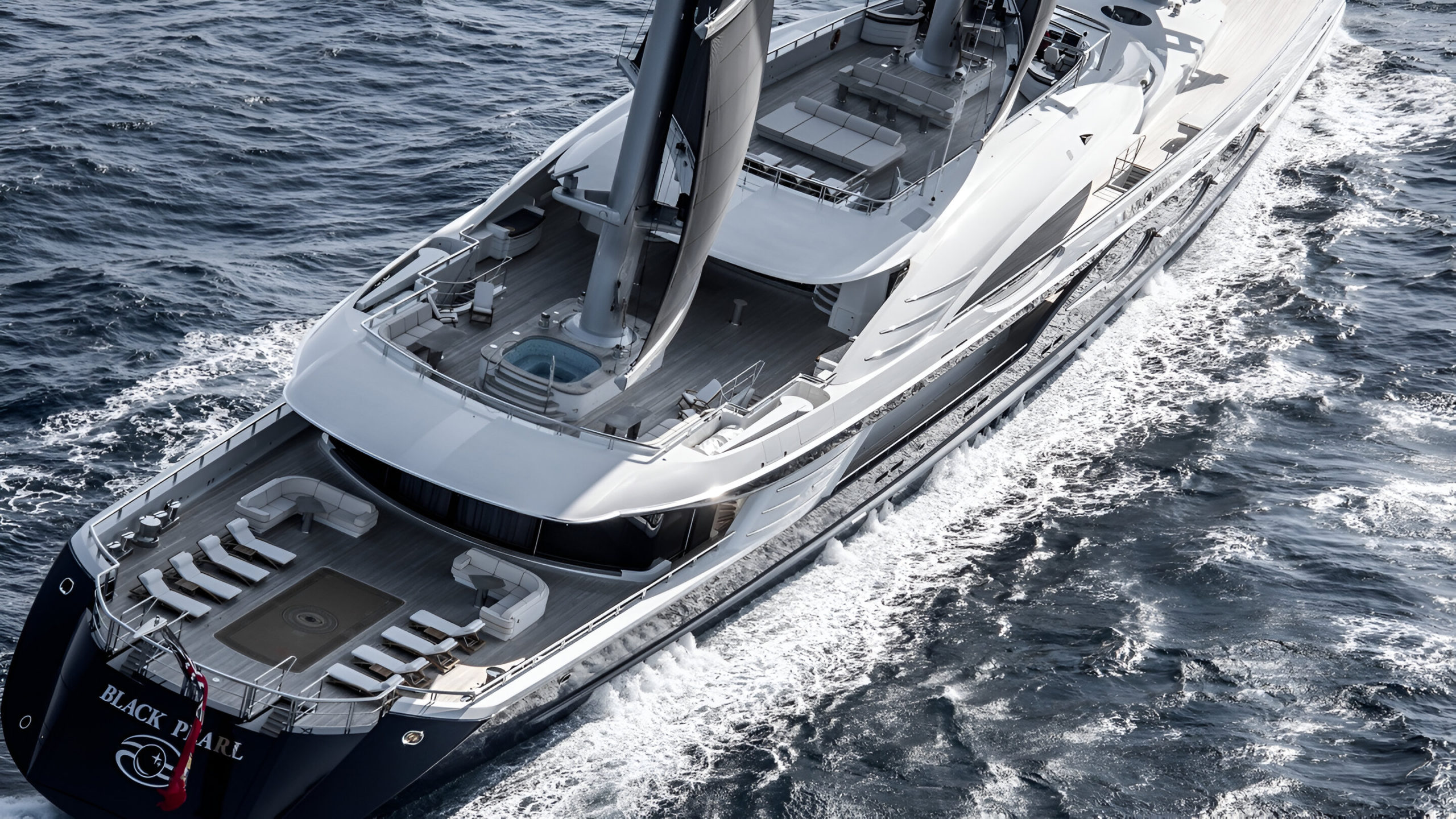CES 2025 pushed past familiar territory with products that tackle real problems. The show featured surprising releases – from a spoon that tricks your tongue into tasting more salt to body scanners that track every health metric imaginable. Big tech showed up with serious hardware: NVIDIA’s supercomputers pack enough power to run complex AI models at home, while Samsung stretched screens in ways that defy physics. Some products hit store shelves soon, others stay in labs for now. Here’s a look at 11 products that stood out from the crowd in Las Vegas this January.
11. Withings Omnia AI-Powered Body Scanner

The mirror features a sleek interface with voice commands and a 3D body model display. It can integrate data from various Withings devices including smartwatches, blood pressure monitors, smart beds, and sleep trackers. The system includes telemedicine capabilities for virtual consultations with healthcare providers. Select features will debut in the Withings app in early 2025, though the mirror itself remains in development with no set release date or pricing.
10. Roborock Saros Z70

The vacuum features 22,000Pa suction power and uses time-of-flight sensors for navigation instead of LiDAR, allowing for a compact 3.14-inch height. It’s biggest party trick is the mechanical arm it has that the vacuum will use to remove debris from its path. It can also elevate its mop pads by 0.87 inches to avoid carpet contact and automatically deposit them at the base station. The device functions as a security camera and can locate pets. Expected to retail for approximately $2,000 with shipping beginning in April 2025, and is compatible with Alexa and Google Assistant, with upcoming Matter support.
9. Halliday Smart Glasses

Features a “DigiWindow” that projects a 3.5-inch screen in the upper-right field of view without requiring special lenses. The glasses include proactive AI that can analyze conversations, provide real-time translations in 40 languages, and offer navigation. Battery life is eight hours, with a weight of 35 grams. Control options include voice commands and frame-mounted buttons, plus a planned ring-like trackpad accessory. The glasses require a Bluetooth connection to a smartphone for many features. Shipping is expected by the end of Q1 2025.
8. Nuwa Pen

The Nuwa Pen, unveiled at CES 2025, is being touted as the world’s smartest ballpoint pen, capable of digitizing handwriting on any paper surface. This innovative device features a patented TRIDENT camera system with three cameras, motion sensors, and AI-powered technology that captures and digitizes everything written with standard D1 ink cartridges. The pen offers 2 hours of continuous writing on a single charge and can be fully recharged in just 15 minutes through its USB-C charging case.
Weighing only 28 grams, it comes equipped with 4096 levels of pressure sensitivity, unlimited cloud storage, and compatibility with iOS, Android, and web platforms. Through its companion app, users can search, organize, and share their handwritten notes, with an optional $2.99 monthly subscription providing additional features like text conversion and augmented notes. The Nuwa Pen is currently available for pre-order at $295 and is scheduled to begin shipping in the first quarter of 2025.
7. NVIDIA Project DIGITS

A personal AI supercomputer featuring the GB10 Grace Blackwell Superchip, delivering 1 petaflop of AI performance. It includes 128GB unified memory, 4TB NVMe storage, and can run 200-billion-parameter models. The system runs on standard power outlets and uses Linux-based NVIDIA DGX OS.
6. NVIDIA Cosmos

A platform of generative world foundation models designed for physical AI systems development. It provides tools for video search, physics-based synthetic data generation, and AI model development.
The platform includes state-of-the-art visual tokenizers that deliver 8x more compression and 12x faster processing than current leading tokenizers. It features a CUDA-accelerated data processing pipeline that can process 20 million hours of videos in 14 days using the NVIDIA Blackwell platform. The system includes the NVIDIA NeMo framework for model training, customization, and optimization.
5. Samsung Vision AI TVs

Samsung unveiled its Vision AI technology at CES 2025, integrating advanced AI features across its widest TV lineup yet, including Neo QLED, OLED, QLED, and The Frame series. The system makes TVs “aware” of their surroundings and adaptive to user preferences, featuring innovations like Click to Search for instant on-screen information, Live Translate for real-time subtitle translations in up to seven languages, and Generative Wallpaper that creates AI-generated art.
The flagship Neo QLED 8K QN990F, powered by the NQ8 AI Gen3 Processor, showcases advanced features including 8K AI Upscaling Pro, Auto HDR Remastering Pro, and Color Booster Pro for optimized picture quality. The TVs also function as smart home hubs through SmartThings integration, offering Home Insights for safety notifications and Pet and Family Care features that can detect unusual activities. Through partnerships with Microsoft and Google, Samsung is expanding Vision AI’s capabilities, with select 2025 models featuring Microsoft Copilot integration for personalized content recommendations.
4. NVIDIA GB200 NVL2

The NVIDIA GB200 NVL2 is a groundbreaking data-center super-chip unveiled at CES 2025, featuring 72 Blackwell GPUs and delivering an impressive 1.4 exaFLOPS of computing power. The system introduces massive coherent memory of up to 1.3 terabytes shared between two Grace CPUs and two Blackwell GPUs, designed to supercharge AI workloads in data centers. With a power consumption of 2,700 watts, the NVL2 represents a significant advancement in AI computing capabilities.
The system utilizes NVIDIA’s advanced NVLink connectivity for high-speed communication between processors, offering unprecedented bandwidth for complex AI tasks. However, due to its high design specifications and thermal requirements, mass production and peak shipments are expected to be delayed until Q2 or Q3 2025, with manufacturers shifting towards liquid cooling solutions to manage the system’s substantial thermal output.
3. Samsung Stretchable MicroLED Displays

Samsung Display showcased a groundbreaking stretchable microLED prototype at CES 2025, featuring a 6-inch screen that can physically protrude outward from a flat surface to create glasses-free 3D effects. The demonstration included aerial footage of the Las Vegas Sphere, with the screen dynamically curving outward to match the venue’s spherical shape. The display smoothly transitions between flat and protruding states in a rhythmic motion, creating an immersive visual experience that’s particularly effective when viewed from a 90-degree angle.
While currently demonstrated in a small form factor, this technology suggests potential future applications in phones, tablets, and TVs, though Samsung hasn’t announced any immediate plans for commercial products. A larger 11-inch version of the stretchable panel was also shown, with Samsung suggesting possible applications in automotive displays and wearable devices.
2. NVIDIA Isaac GR00T Blueprint

NVIDIA’s Isaac GR00T Blueprint, unveiled at CES 2025, is a comprehensive suite of tools designed to accelerate humanoid robot development through synthetic motion generation. The system operates through three main workflows: GR00T-Teleop, which uses Apple Vision Pro to capture human actions in a digital twin; GR00T-Mimic, which multiplies captured actions into larger datasets; and GR00T-Gen, which expands these datasets using NVIDIA Omniverse and Cosmos platforms.
The blueprint addresses a critical challenge in robotics development by enabling robots to learn through imitation learning, converting a small number of human demonstrations into extensive training datasets. This technology significantly reduces the time and cost traditionally associated with robot training by eliminating the need for extensive real-world data collection. The system integrates with NVIDIA’s Isaac Lab, an open-source modular framework for developing safe and effective robot policies, and is already being adopted by major robotics companies like Boston Dynamics and Figure.
1. Kirin Electric Salt Spoon

Kirin’s Electric Salt Spoon, showcased at CES 2025, uses weak electrical currents to enhance the perception of saltiness in food without adding additional sodium. The device, currently available in Japan for $127, features four intensity settings and works by concentrating sodium ions on the user’s tongue through electrical stimulation. The spoon requires a specific grip to function properly, indicated by a light that changes from blue to white when activated correctly.
The technology aims to address excessive sodium consumption, especially in Japan where adults consume more than double the WHO’s recommended daily intake. While the spoon shows promise for health-conscious consumers, it comes with some limitations – it requires hand washing, works best with liquids, and isn’t recommended for certain groups including people with facial nerve disorders, metal allergies, or electrical medical implants.




























